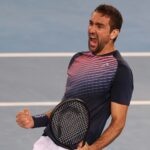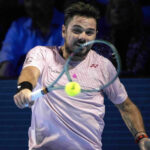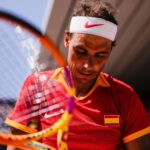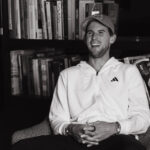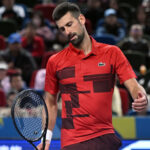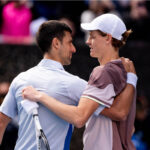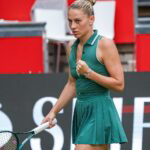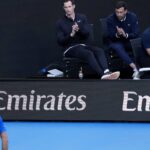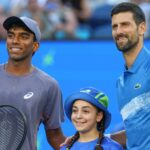Exclusive: “A lot of people have asked me why the hell I was going through this”- Marin Cilic on his comeback
Marin Cilic is back, at 36, after two knee surgeries, determined to get back to the only place he’s known in that sport: the top. We caught up with him in Paris during the last Masters 1000 of the year.
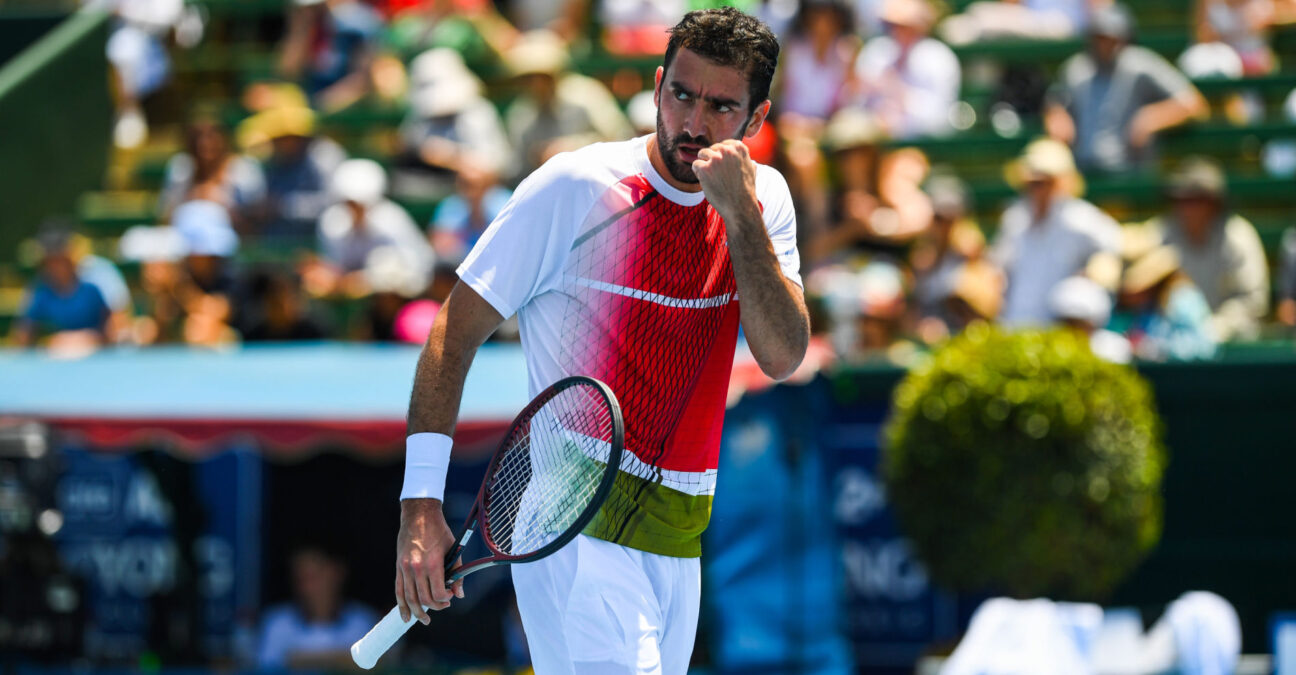 Marin Cilic (Zuma / Panoramic)
Marin Cilic (Zuma / Panoramic)
Marin Cilic is part of this last wave of players refusing to quit the sport. Because they’re that good that they can push it close to their 40s. And because the younger ones didn’t find a way to retire them, to make them think they were done for the biggest titles. And so Marin Cilic, 36, returned in August after playing only twice in 2023 (Pune in January, Umag in July), only from January to February in 2024, going through two knee surgeries and months of rehab. How did that go? Well, he won a title in his third tournament – the first on the ATP Tour after two Challengers – in Hangzhou, becoming the lowest-ranked player (#777) to be crowned a champion in ATP Tour history. As of this week, he already has the Top 100 in sight (#196).
“A lot of people have asked me why the hell I was going through this after all I already had done in my career!” Cilic is laughing at this while I’m asking him how he decided to keep playing instead of enjoying his life with his family in Croatia, which he loves so much. He won a Grand Slam title (US Open 2024), a Masters 1000 (Cincinnati 2016), the Davis Cup (2018), played two Grand Slam finals (Wimbledon 2017, Australian Open 2018), a silver medal in doubles in Tokyo, and so on. He is, with Stan Wawrinka and Juan Martin Del Potro, part of the rare species that was able to carve an amazing career despite being thrown in the middle of the Big 4 era. But the former World No.3 shares a trait with all these names: he loves what he’s doing, and he’s been used to winning for too long to just accept being defeated by his body.
“Stopping now wouldn’t be true to me”
Cilic wants to finish his career in a way that matches his values. And a knee injury wasn’t on that list. “Both ways (retiring or not) would have been fine. But I had a great bounce back in 2022, played the semis at the French, had a great US Open (lost in the fourth round in five sets against Carlos Alcaraz), also Australian Open (lost in the fourth round against Felix Auger-Aliassime), but got unlucky at Wimbledon with the Covid (had just played the semi-finals at the Queen’s).
I felt this was a great season and then, bang, I got injured. So I thought that stopping now wouldn’t be true to me. During my whole career, I’ve been really professional and disciplined. I’ve always trained, planned things well, and never played too many tournaments to keep the best possible physical shape. So wondering if I should stop now just because I have to do the surgery? I wanted to come back, and luckily, my family situation was great. My boys are still small; they’re four – almost five – and three, so I felt good motivation and support from them, from my wife.”
Good motivation was the key as Cilic went through quite the journey to fix that knee. He mentioned a meniscus and cartilage issue, and obviously, it rang a Novak Djokovic bell in both our brains, but he laughed in awe. He had no time to catch up with Djokovic about it but found his comeback absolutely insane to witness. His story was much different.
“It was quite a challenge because, as an athlete, you feel you will solve the situation as quickly as possible. Take a break as short as possible, do the rehab, and get back. The real story was different. I did the first surgery, I did the rehab, but then the knee started to swell. I wasn’t sure if it was normal or not, if it was adjusting to the conditions or the load, and then I tried to play in Umag even with a bit of swelling in my knee because I thought maybe that was the new normal. But after playing one match, the knee was really in bad shape. We were six months after the surgery so, what to do now? It was a little bit of a rollercoaster, also mentally. It was also the unknown: you are left ‘on promenade’, as we say in Croatia. What to decide?”
“since that second surgery, the knee has been feeling back to normal”
In a very top-player mentality, Cilic took it into his own hands after not seeing enough progress and basically turned into a medical researcher when the conservative method of dodging another surgery didn’t work.
“I was at maybe 90% and had to find a way to play with that. I decided in March to do the surgery because I couldn’t go like that anymore. Whatever happens, happens. If it was going to take me another twelve months of rehab, I was going to do it. I got in contact with a few doctors, and what was very good in this whole process was that I was involved: talking with the doctors, doing the research, reading everything! Articles, research: I may have reviewed a hundred scientific research papers about meniscus and cartilage, rehab, and treatments in Europe and the USA. I decided to go to the US for that second surgery, and luckily I made that decision because since that second surgery, the knee has been feeling back to normal. It reacted incredibly well, and I took enough time to get some preparation, get in shape, and start slowly.”
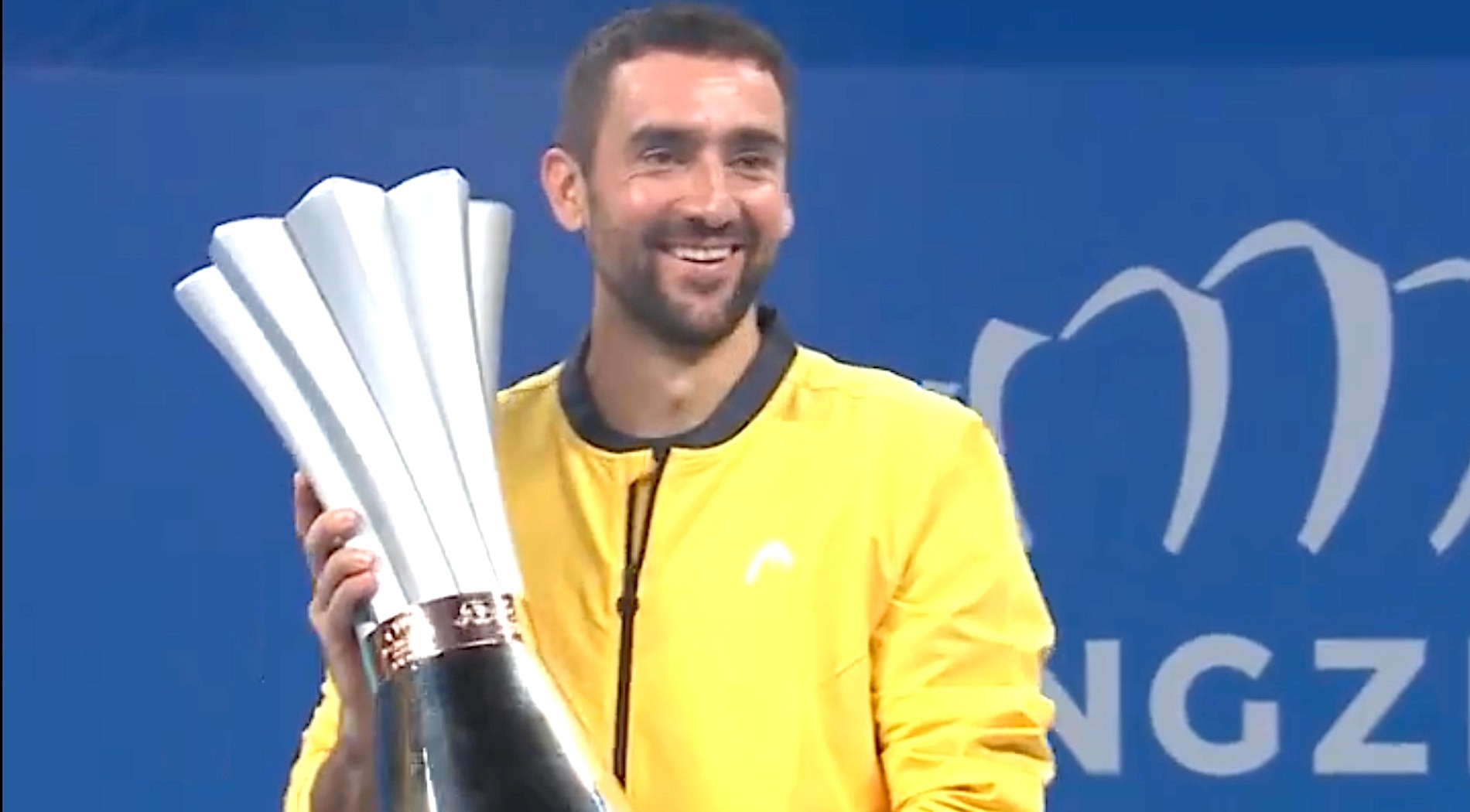
Would he qualify as slow the fact to win the first ATP event he actually entered? Did it feel normal, business as usual, or more of a what the hell just happened? He smiled and shrugged: “It was normal.” Then he just burst out laughing. Cilic is realistic about that whole comeback: he’s back at a good level already, but he’s not back at his best level. As Arthur Fils said in Paris: when Marin is on the ball, you’re in trouble. But the next step now is to make sure he gets quicker and faster on these balls. He played two ATP 500s and two ATP 1000s after his title and didn’t win a match in singles despite making it very close with the Top 20 players. He’s now won a singles match again this week in Belgrade. Yet, in Hangzhou, he knew it wasn’t only about his game.
“Sport was a little bit cruel to them,” said Cilic on the end of Federer, Nadal and Murray
“During the whole summer, it was the first period since January 2023 that I was actually training without wondering if my knee would be okay the next day. I was training without any breaks and then week after week I was feeling better and better. I think overall my level during training is still a little bit better than in the matches. I played two Challengers, and I felt quite good, so I wanted to keep going and went to Hangzhou. I felt good playing with the guys, but the title came more from my mentality than playing incredibly well. I was performing well in critical situations due to my experience.”
If the knee keeps holding up, Cilic should only improve and become a true threat in the big events of 2025. His striking skills still belong at the top of the game, and his pace, too. He also has the serve to get those free points, and he owns all the experience in the world. But he saw his former nemeses, Roger Federer, Rafael Nadal, and Andy Murray, leave the sport, and it taught him a lesson: at their age, there’s no more guarantee with the body, so every chance needs to be taken but in a very cautious way.
“With Roger, Andy, and Rafa, it happened quite suddenly. So you never know, it’s very similar to life. You have to do the best you can. I think it was a bit of a pity to see Roger and Rafa doing well and then being out like that. Same for Andy when he was at the top, then having to go through these hip surgeries. The sport was a little bit cruel to them: how much they gave to the sport, and yet it was gone in a second. I hope I can still be competitive, just to give myself a chance. I would love to play another two or three seasons. I will try to take care of the scheduling by maybe playing fewer tournaments. The motivation is still there.“
“it’s a little bit of a cliché when people talk to you about enjoying”
Getting injured as he did at his age isn’t abnormal, but we’re seeing so many injuries on Tour lately through all age groups that the debate is raging about a sport turning on its players’ bodies. Cilic isn’t sure about it and tends to think the younger generations need to put resting at the same level sometimes as playing.
“There were injuries before, and there will be others in the future as well. When you play at this level of the sport, you, of course, push your body to the limit. But then you have to understand what your limit is, in a way. Some guys can play 28 tournaments in a year and feel fine, that’s great. Play 70 matches in a year, okay. But in my case, I was always very diligent not to go to tournaments when I wasn’t feeling so well and to really take care of my training. In the end, one extra tournament in a row after playing three or four can cause bigger damage than taking a break, relaxing, training, and coming back fresh. I think it comes down to trying to find solutions in a Tour that is so global. Everybody needs to balance it out.”
Don’t talk to him about enjoying his time now and not caring much about the results. That’s not the approach at all. It’s not the first time that Marin Cilic has to come back from an injury, but it’s not making it any easier mentally. “Now, the view is even more, psychologically, to give myself the best chance to do the best I can. Okay, you’re in a tough situation in that match, fine, let’s be positive about it; let’s play rather than be negative and down on yourself. But it’s a little bit of a cliché when people talk to you about enjoying because when you come on the court there are so many emotions: you want to win, you’re a little bit nervous, every point counts compared to practice, etc. But one needs to find a way to be positive.”
Still, it has to feel a little weird to still be around, surrounded by players in their early twenties, not seeing his old foes anymore. Dominic Thiem, much younger than him, has just retired too. Juan Martin Del Potro is also gone. Does he think about it at all? That he went through a few generations already and is among the last ones standing? And may have had the toughest era in which to try to exist. “When I came on Tour, I wasn’t thinking ten years ahead, wondering if I’d have more chances playing in another decade, against another generation,” he said. Before smiling when thinking about it all. “For 15 years, you couldn’t go through a Masters Series without beating two or three of the best ones. You were thinking: ‘This is crazy! What do I need to do?'”
And now? Now, despite being 36 and coming back from a serious injury, he is focused on what he sees as new opportunities. “Then there’s a little bit of a shift in the generations; guys like Tsitsipas and Zverev aren’t so young anymore; they’re in a space where it’s time to push as hard as they can, but then you see some opportunities, and that gives you motivation. But still, you need to perform and bring high-level tennis.”
It’s been the story of his career, and he has proved many times that he can deliver. Can Marin Cilic pull another trick out of his box in one last wink to a tennis era that’s coming to an end and where he found a way to write some very fine pages? We’ve seen how the story ended for Federer, Murray, and Thiem. We’re about to see the last chapter of Nadal. One by one, the A-List cast gets behind the curtain. And then there were none? Sure, but not yet.
